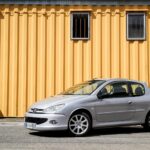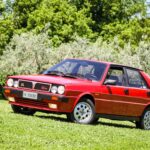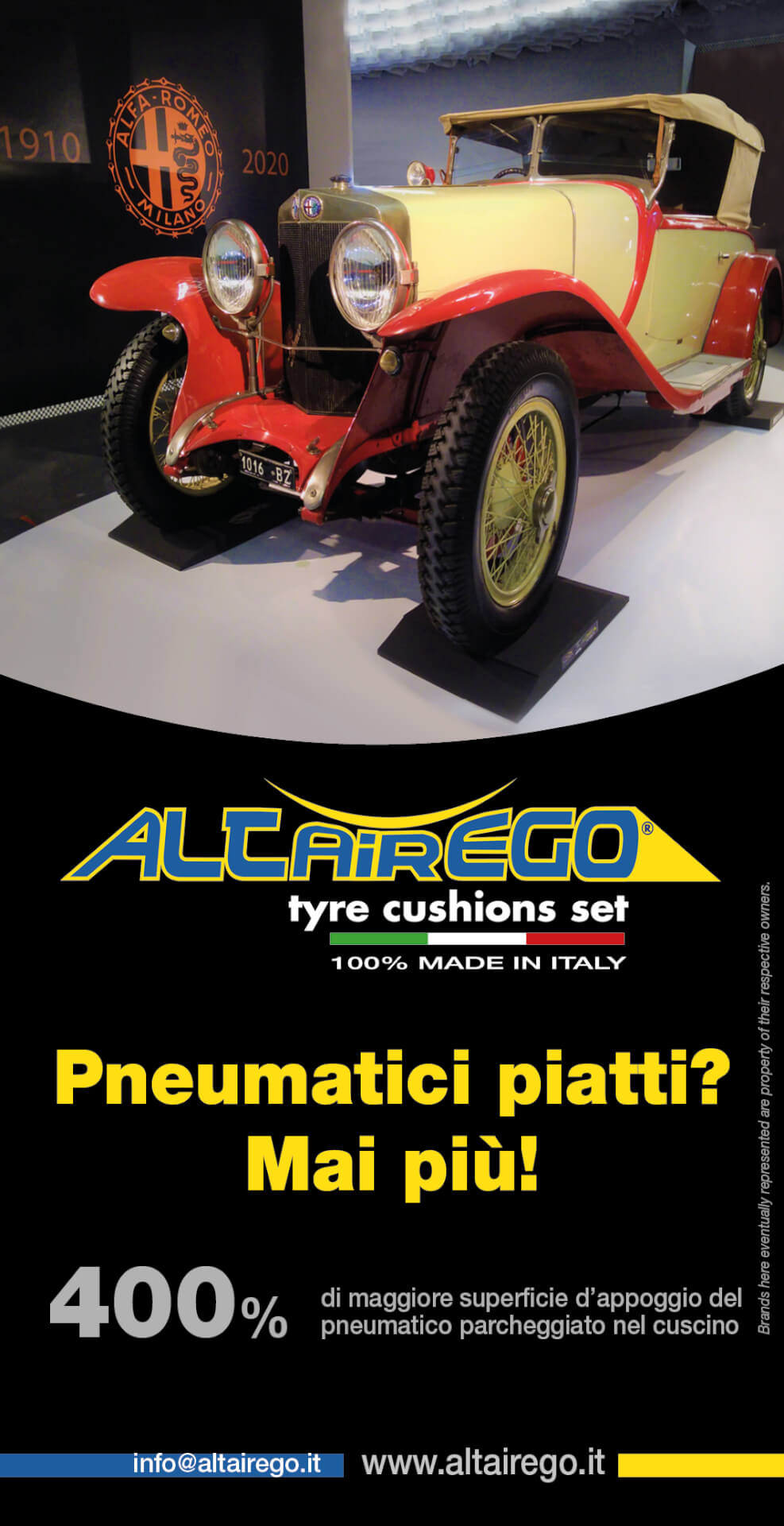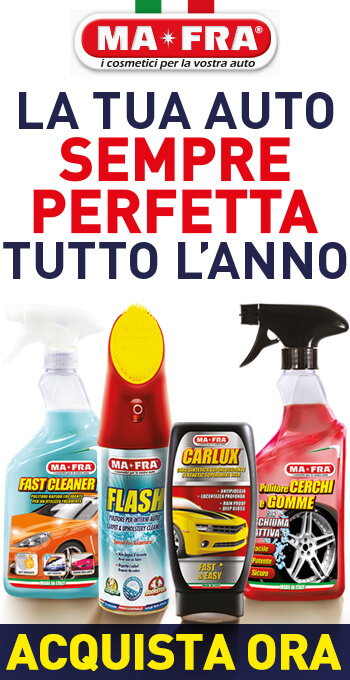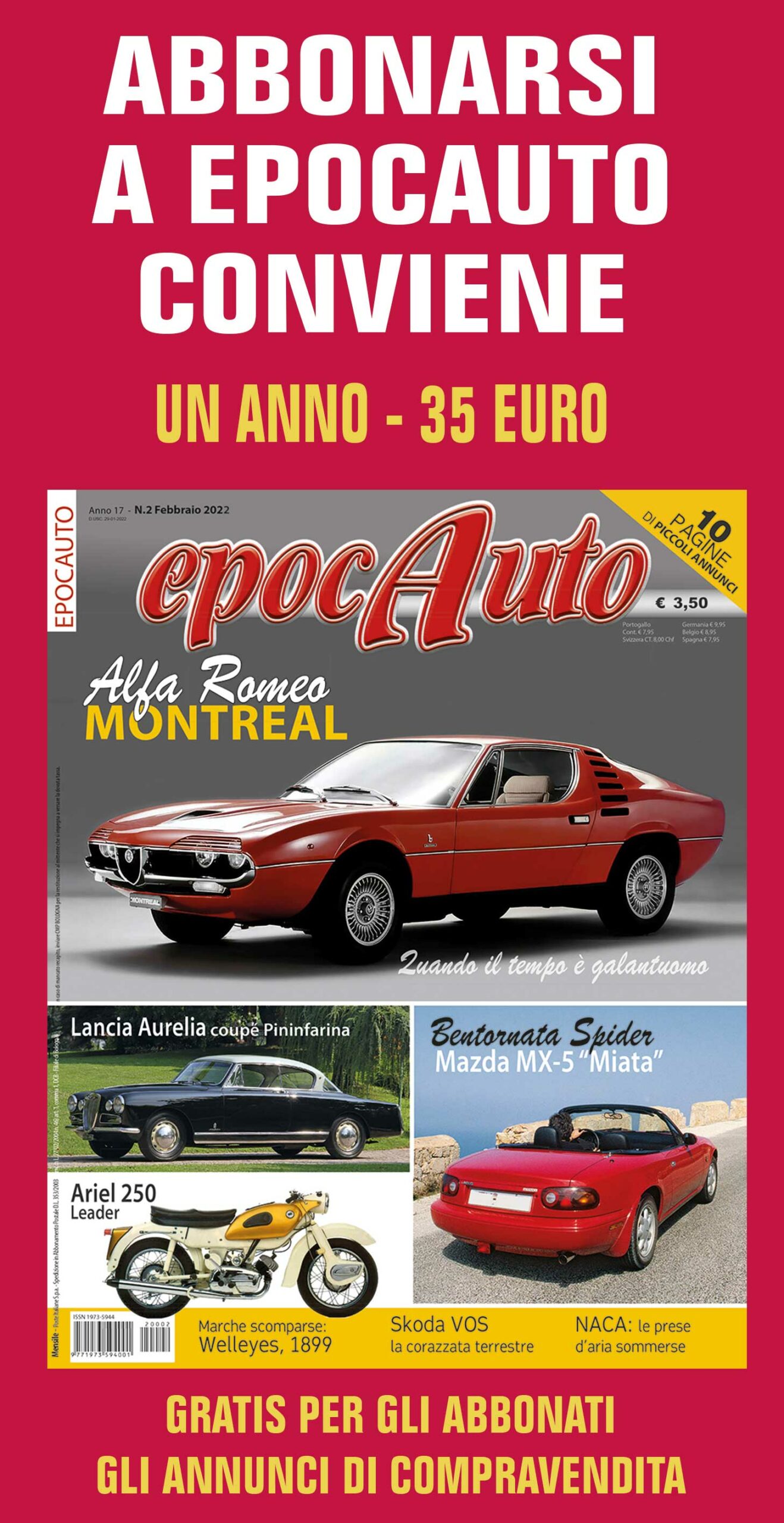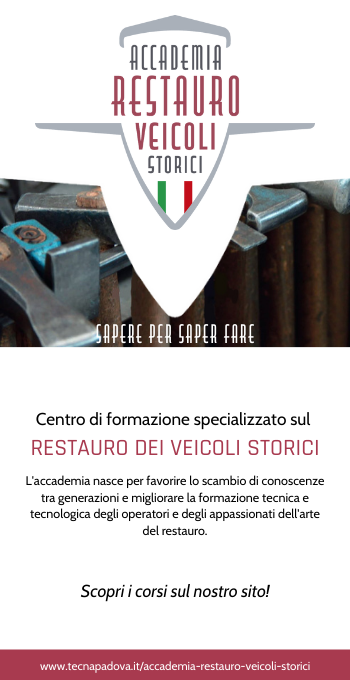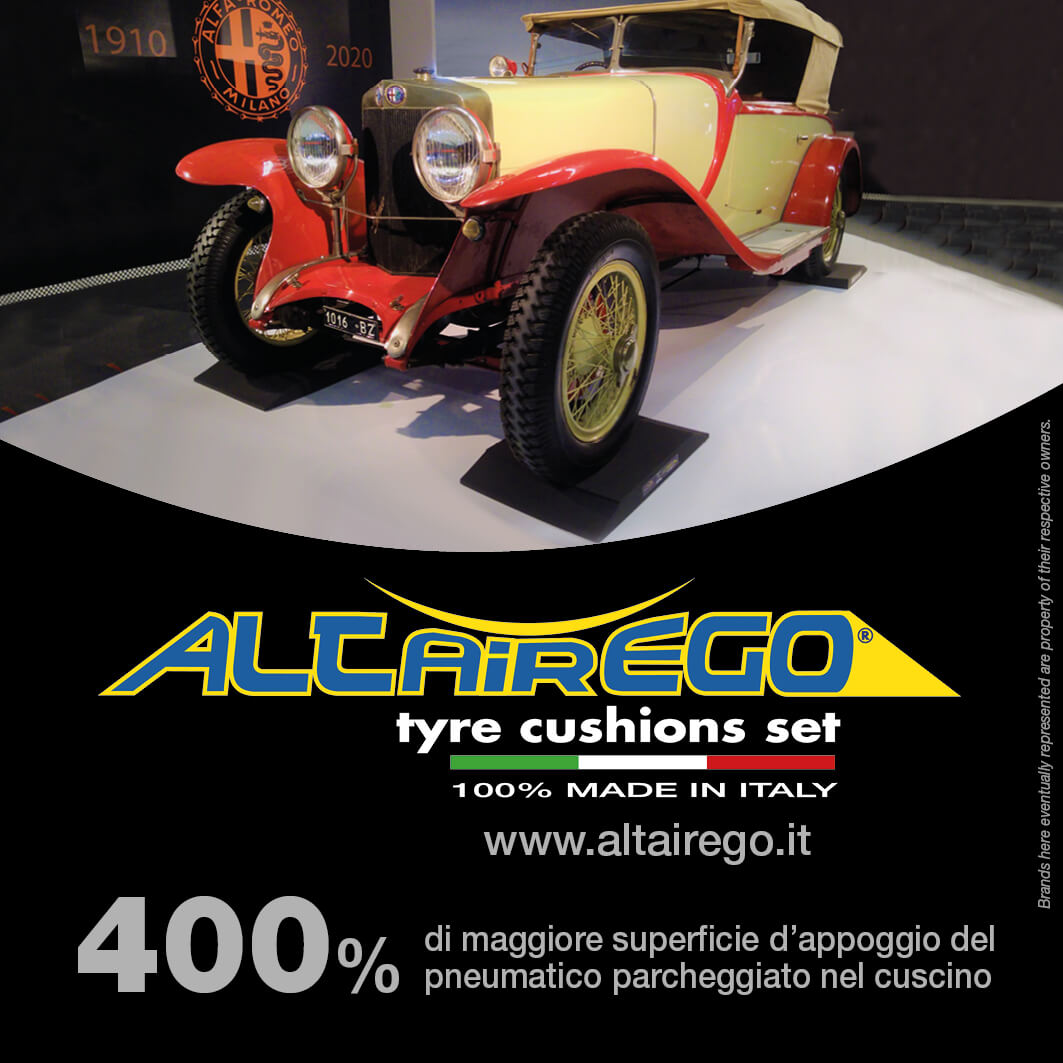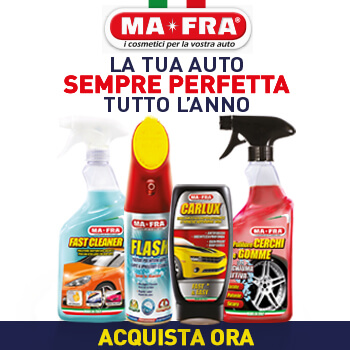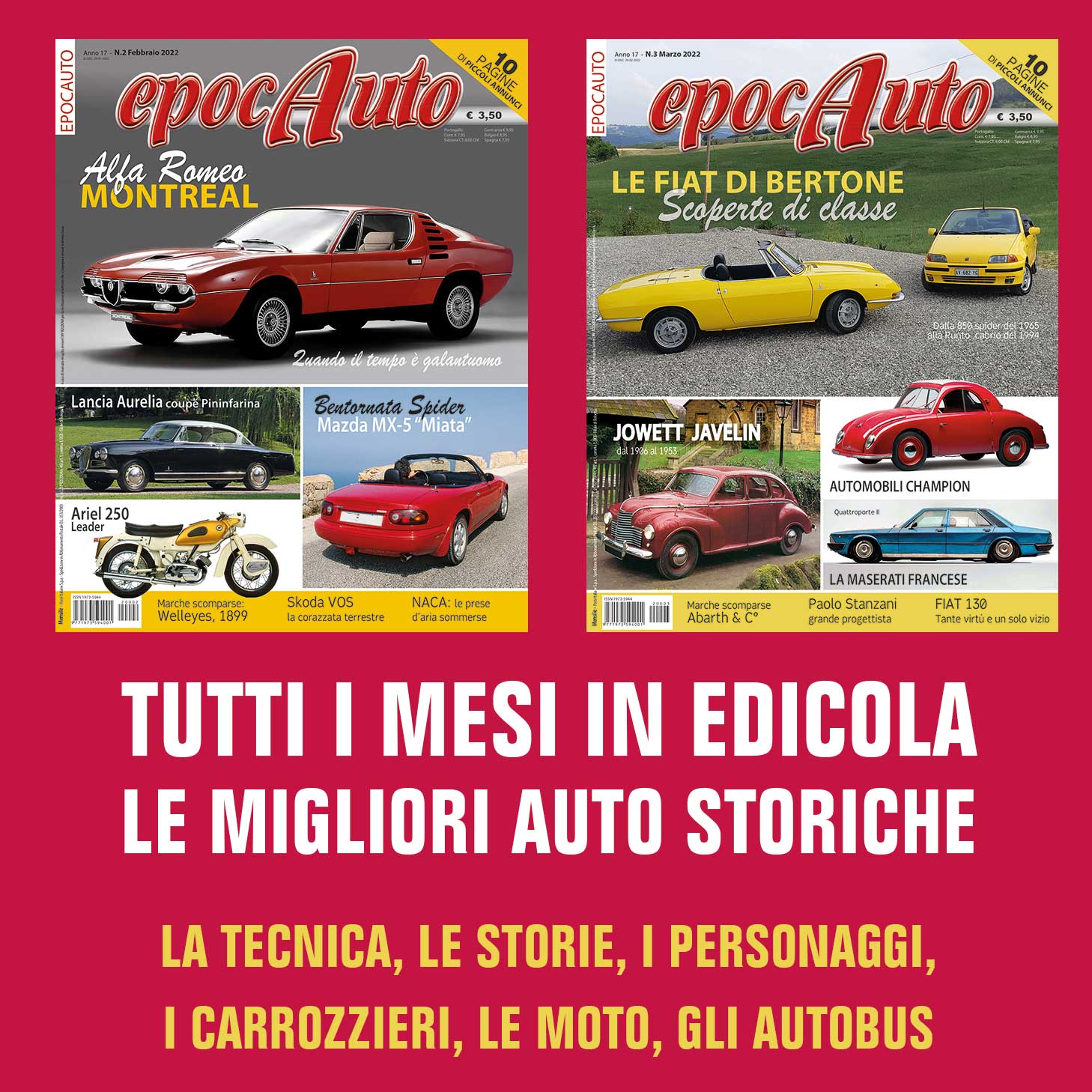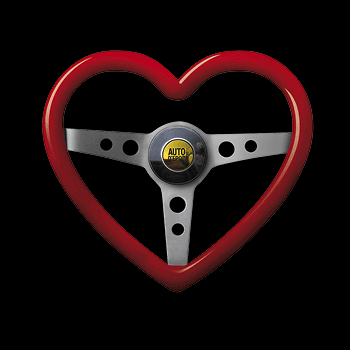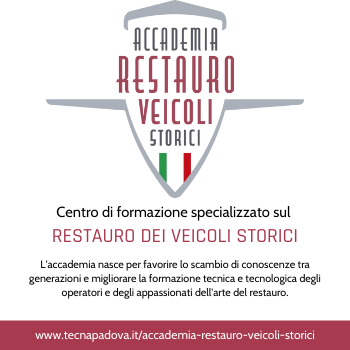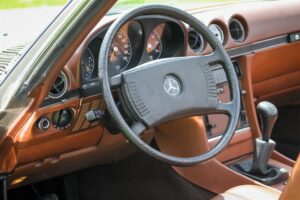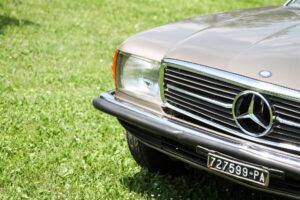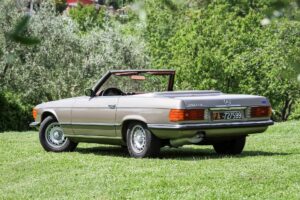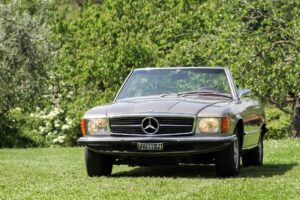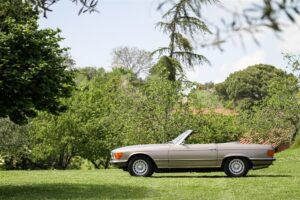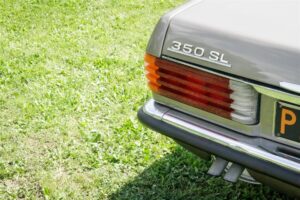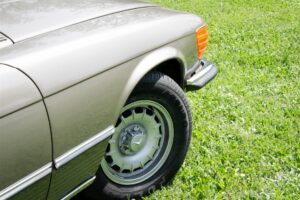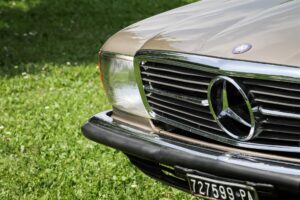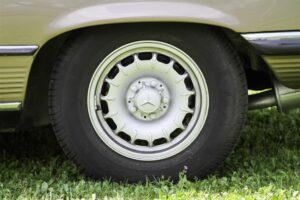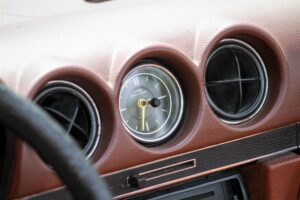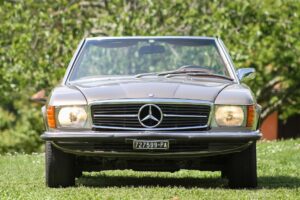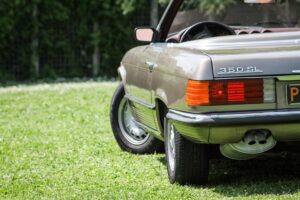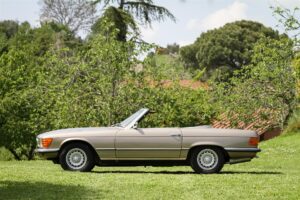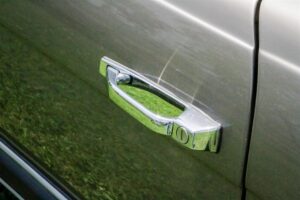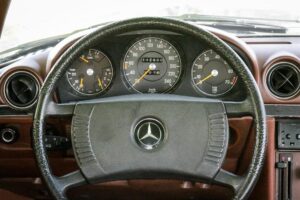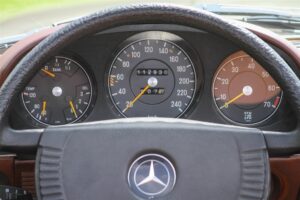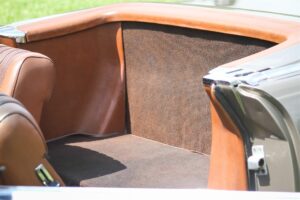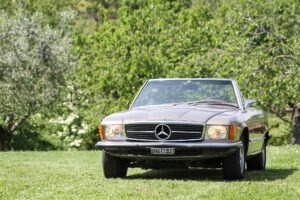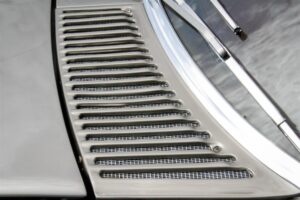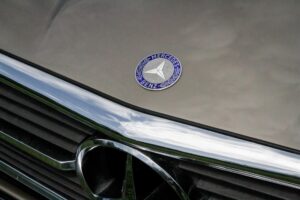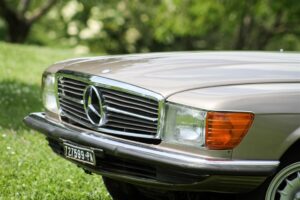Magazine Agorauto
Mercedes 350 SL perpetual youngtimer
Author: Michele Di Mauro · Credits Ph: Michele Di Mauro
5 April 2022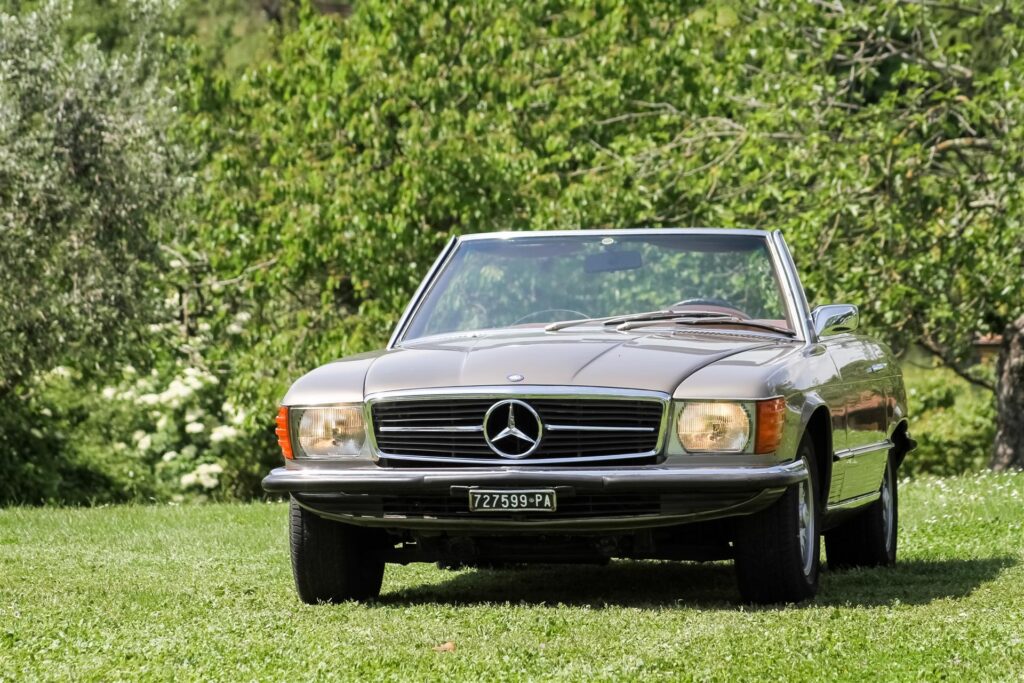
When the time came at the end of the 1960s to update the prestigious SL W113 series, Mercedes broke out in a cold sweat. The task would be difficult, and a major responsibility: the SL range was one of the Stuttgart-based company’s most popular products; the first series, available in 190 and 300 variants, which included the famous “gullwing” coupé, and the second, with its 230, 250 and 280 “Pagoda”, named for the unusual shape of its hard top, are today still among the most iconic sports Mercedes of all time. And when the time came to replace it, the “Pagoda” was still highly appreciated and sold well. This is due to its timeless lines, its brilliant, pleasant and mellow road performance, and the excellent build quality.
The weight of the years was beginning to make itself felt, however, particularly in terms of roadholding, which was quite demanding on wet and slippery surfaces. In a prestige automobile, rear axle with oscillating arms and a central compensation shock absorber represented a solution that was simply too old-fashioned to take on the challenges of the new decade. Added to this was the imminent arrival of new road safety regulations for the North American market, which had always been a prime hunting ground for German sports cars.
For this reason, at the end of 1967, studies started on a new coupé and roadster, with project codes R107 (roadster SL) and C107 (coupé SLC), which essentially differed from the open top version due to its longer wheelbase, the four-seater passenger compartment and the enclosed bodywork. This painstaking design and development work would take almost three and a half years.
The new car was in fact unveiled in April of 1971, in its 350SL version. More robust, stable and sizeable, but ultimately stunning, the R107 sacrificed the particularity of the concave rigid roof which had characterised the previous version in favour of more modern, streamlined lines. A blend of timeless elegance and sportiness which would keep it on the catalogue for a good 18 years, with constant updates which affected the mechanicals much more than the aesthetics.
The new, larger and more robust body literally set the standard, so much so that the R107 became nicknamed the “panzerwagen” (armoured car); a peculiarity which, on the other hand, signified a trade-off on the weighing scales (of over 1500 kg), forcing the German engineers to devise the installation of more generous engines than in the past. As a result, the 107 series debuted with the 350 SL, fitted with a 3.5 litres, 205 hp V8 M116 fuel injection engine, combined with a mechanical four-speed gearbox, or alternatively, a three-speed automatic.
The United States, where the car debuted the following July, saw the launch of the 350 SL 4.5 version of the R107, which came equipped with a 4.5 litres V8. The more stringent American antipollution regulations would in fact have made the three and a half litres of the European version entirely inadequate; suffice it to say that the 4.5 homologated in the USA delivered barely 195 hp, a low number even at the time, and in any case lower than the European version, with its smaller displacement.
Comfortable and luxurious, the R107 provided a worthy solution to the stability issues of the old W113. The new car combined a traditional mechanical arrangement with an engine mounted longitudinally at the front, rear-wheel drive and a ball steering system (servo-assisted) with a modern front axle with independent wheels on articulated wishbones, coil springs, a stabiliser bar and a rear axle with diagonal arms, also fitted with coil springs and a stabiliser bar, completing the picture with self ventilating disc brakes on all of the wheels. This clearly improved the general level of drivability and stability, thanks also to the relatively long wheelbase for a two-seat spider: 246 cm.
This was a dynamic arrangement which rapidly generated calls for better performance: as early as 1972, the 450 SL version made its appearance, powered by the same 4520 cc fuel-injected V8 as the US version, but, liberated from emissions constraints, it was capable of delivering 225 hp in combination with a four-speed automatic gearbox.
The range did not only larger, however: in 1974, with the onset of the oil crisis, Mercedes launched the “small” 280 SL, fitted with the 2.8 litre, 185 horsepower M110 engine, once again combined with a four-speed gearbox. The fifth gear would only appear in February of 1980, together with a modest restyling of the interior. For the occasion, the larger-displacement cast-iron engines gave way to new light alloy units: the 350 SL was replaced with the 380 SL with a 3818 cc, 218 hp engine, while the 450 SL was replaced with the 500SL, powered by a 4973 cc, 240 hp unit, recognisable by the contrasting paintwork on the lower bodywork and the small black plastic wing on the rear boot.
The following year, new mechanical updates were introduced to improve efficiency and consumption, and these became more substantial in 1985, when the interior also once again underwent further restyling. The 280 SL gave way to the 300 SL (2962 cc, and 182 hp) while the 380 SL was replaced with the 420 SL (4196 cc and 218 hp), which could be ordered in a catalyser-equipped version. There were also detail modifications to the top-of-the-range 500 SL, which gained a small front spoiler and 5 more horsepower.
Things went differently overseas, however. The US had traditionally been the reference marketplace for the SL series, and in fact, two-thirds of R107 total production would receive their Green Cards. SLs intended for the US market differed from their European counterparts thanks to a few aesthetic details, including split headlights, shock-absorbent bumpers (which protruded much more obviously) and the third brake light on top of the boot.
The US engine range broadly followed the European one, with inevitable penalties in terms of power caused by the use of catalysed exhausts. Things got interesting when, in 1985, the “sluggish” 420 SL was replaced with the 560 SL, whose 5.6 litre, 227 hp engine, never sold officially in Europe, produced an enviable maximum torque of 373 Nm at 3250 rpm.
For Agorauto, we chose to photograph this stunning example of a 350 SL, preserved with only 112,000 km on the clock, because it forms part of one of the first production batches. The car dates from 1971, the year of the model was launched, and it celebrates its 50th birthday this year. It is also an emblematic example of the fate of the R107: lines that are so long-lived and timeless that it looks much younger than it really is. This is proven by the fact that 350 SLs are only rarely glimpsed at historic car events: paradoxically, for many, it simply looks “too modern”. And indeed, with its taut, clean lines, it certainly was at the time. Suffice it to say that the most credible British competitor of the Time was the rather more baroque, temperamental and now venerable Jaguar E-Type. This feeling is further strengthened by the fact that anyone over 50 today remembers the days when, at the turn of the 1990s, it was still possible to order an R107 from a Mercedes showroom.
The downside, albeit a positive one, of a car which looks less of a classic than it is, is that today, the 350 SL is one of the most pleasant, reliable and enjoyable cars of the early 1970s that you can still buy. And all at very reasonable prices, as demonstrated by this example, on sale right here on Agorauto. Velvety, full-bodied and solid, it marks a return to all of the quality of the Mercedes cars that fans of the brand still miss.
Tags: 350 SL, classic, Mercedes, R107, Roadster, youngtimer

